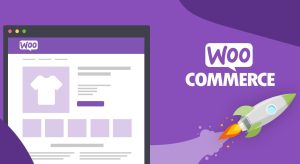Using UX Design to Solve User Problems

Promoting a business outfit on the World Wide Web is an opportunity to compete in a global market favourably. Either as a product-based or service rendering institution, the internet presents a viable platform for business organizations to thrive. Creating a fascinating (intriguing) website is a great innovation, but delivering a user-friendly and problem-solving site is more rewarding.
Ux connotes user experience-that is, the usability of an app or web content in promoting the interest of users as they perform a specific task on the internet. A website can be adjudged to be simple, easy or complex when people are interacting with it. Ux design is all about creating a compelling experience for users where they can get answers to their problems. The behavioral pattern has shown that internet users will favour a site that is simple, well structured and less cumbersome. Since people search the net for a possible solution to their problems, a user experience design is a right call to address these challenges (problems).
It is therefore professionally right to say that, UX design is essential for problem-solving; discovering what customers want and giving it to them satisfactorily. Identifying the needs of web users can sometimes be problematic and confusing. However, under a UX perspective, the real problem of people can be sorted out in the following ways:
Research
The goal of every designer either in the physical world or web development is to solve problems. Ux involves design thinking. This is a process that starts by probing into peoples’ needs, aspirations and desires. Web designers should avoid the temptation of quickly defining the problems (requirements) of their content users. You must listen to your customers and gather as many information on their perceived problems.
Determining the real problem of your clients can be tricky, even with multiple kinds of research. This is because your patronizers may not be able to analyze their issues properly. So relying entirely on their suggestions or responses can further aggravate the problem. Firstly, it is likely to lead to creating more apps or contents to confuse users further. Secondly, the cost of additional apps and its maintenance means more spending. Proper investigation will mean that a designer will explore different methods such as; competitors analysis of the same problem, interviews and personal questionnaire to dig deep into the issue. This will remove any form of ambiguity.
Define the actual problem
Designers will not like to create many solutions to solve many problems; but rather, a solution that fits all common issues. After gathering enough information concerning your audience, the underlying issues (needs) and its cause should be defined. This will allow a web developer to come up with a single model or approach to solving many problems.
Create a sketch or prototype
After determining the real challenges of web users, there is the need to commit pen to paper. At the early stage of the web development process, a skeletal work (sketch) is necessary up to an advanced stage where a prototype of the actual design needed to be created. This allows web creators to engage with decision-makers and other professionals in the organization to make their inputs before arriving at the final result. These professional inputs ensure that a design complies with the company’s objectives as well as satisfying the needs of users. This is important because UX involves teamwork.
Test your design for feedbacks
You need to test your design with some of your customers to get the necessary feedback. Obtaining responses from people outside your business clique is significant. This will afford you honest remarks concerning your work and the best way to improve on it.
Identify your target audience (customers)
It is challenging to create a pleasurable user experience without knowing who the consumers will be. The perfect place to start will be to define your target audience. The following steps help to determine the right audience.
What do you represent?
What you can do determines your audience. Your ability to render a particular service online will determine people that will be attracted to your site. It is difficult to accurately define your audience until you express in clear terms what you can do for them.
What imminent problem can you solve?
It should be known to your would-be customers what pressing problem you can solve for them-a common problem that applies to a category of people.
Profile your users
Having a passive knowledge about your target audience is not a good practice. Filtering your audience into categories based on their characteristics will make you know them well. For instance, the demographic nature of your target groups such as age, gender, location and occupation will afford you the right language and content suitable for them.
Be committed to their goals and aspirations
A UX design will achieve great result if it’s capable of promoting users’ goals and motivating them to success. The aim of any website should be to make people better than when they first encountered it.
To conclude, UX design does not only provide for product/service acceptability but strengthens the customer base- thereby ensuring the continued existence of an organization.






